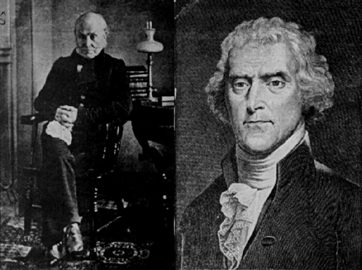
Confronting Bodies: U.S. Government
Date of Action: 1798
Specific Location: United States
Description of Artwork: Twenty-five Republican editors and printers were prosecuted under the Sedition Act (1798) for "criticizing federalist policies." The law, initiated by president John Adams "..made it a crime, for example, to publish any "false, scandalous and malicious" writing against the government, the Congress, or the President "with intent to defame" them or bring them "into contempt or disrepute" or to stir up sedition." The crime carried a penalty of $2,000 fine and two years in jail." (The First Freedom Today, R. Downs, ALA,Chicago, 1984 Pg.5 ) "even drunks who were overheard condemning (President) Adams were duly charged and fined." (The Encyclopedia of Censorship, Jonathon Green, Facts on File, N.Y.C., Pg. 275)
Description of Incident: The imminence of war between the U.S. and France(1798) coupled with the thousands of French refugees in the U.S. created a wide spread hysteria in the U.S. It was in this climate that the First Amendment would meet its first major challenge, the Sedition Act. The Sedition Act, put into effect not even a decade after the First Amendment was ratified was in opposition to everything that the First Amendment represented. In 1791 the First Amendment, drafted primarily by James Madison, was ratified: "Congress shall make no law...abridging the freedom of speech, or of the press...' "In effect, sedition ceased to be a crime under the broad prohibitions of the First Amendment, though breaches of the peace which destroyed or endangered life, limb or property, were still punishable by law..." With the passing of the Sedition Act "an immediate uproar ensued. One side contended that "a conspiracy against the Constitution, the government, the peace and safety of this country is formed and is full operation. It embraces members of all classes; the Representatives of the people on this floor, the wild and visionary theorist in the bloody philosophy of the day, the learned and the ignorant. Such arguments were met with impassioned pleas for freedom of speech and press, led by Thomas Jefferson and James Madison."( The First Freedom Today, R. Downs, ALA,Chicago, 1984 Pg.5 )
Results of Incident: Thomas Jefferson took office in 1801, pardoning all those convicted under the law. The Sedition Act expired in 1801 with laws passed by the Fifth Congress.
Source: The New York Public Library, New York City